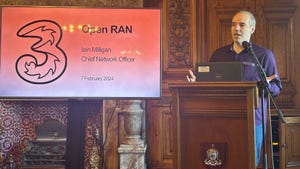
Data Stream Broadband reached an agreement with several counties in Virginia to build an LTE network in order to provide fixed wireless Internet services to customers with slow or nonexistent Internet services.
And now, thanks to CARES Act funding and equipment from Ericsson, the company is planning to expand its efforts via cutting-edge 4G and 5G 64T64R Massive MIMO radios.
"We saw an opportunity to bring the urban [Internet] experience to rural areas," explained Charles Thomas, operations officer for Data Stream.
Data Stream launched 4G LTE fixed wireless Internet services in 2019 across several Virginia counties in partnership with local governments. The result is a Telrad-supplied network, backhauled by microwave connections, that runs in the licensed and unlicensed portions of the 3.5GHz CBRS band, spans 21 cell towers and offers speeds ranging from 15Mbit/s to 75Mbit/s. Customer prices start at around $50 per month. Sean Lee, Data Stream's president, said the network can support unlimited, uncapped data usage, and the company counts just over 500 customers so far.
But company executives said their new effort will result in significantly faster speeds.
Flush with pandemic stimulus funding from the $2.2 trillion CARES Act last year, Virginia's Spotsylvania County agreed to fund the construction of two towers sporting Ericsson's 4G and 5G Massive MIMO radios backhauled through fiber. Data Stream expects to be able to provide speeds of 100Mbit/s and 200Mbit/s to a larger number of customers than it can support today.
There is a bit of a catch though.
"The price point out of the gate is absolutely more expensive," explained David Tews of Xtreme LTE, a Ericsson partner that helped to supply the equipment. However, Tews said that expense – both in terms of equipment and resulting service plans – is worth it so that Data Stream can support 4G initially while transitioning to 5G without swapping out its equipment. "This is going to be a long-term investment."
If Data Stream's buildout plans are approved, the company would cover a total of 6,900 people with its fixed wireless Internet offerings, most of whom have slow or no broadband.
"It's a joy for us to be able to see their faces when they actually get service that they can use," said Data Stream's Thomas of the company's customers.
Related posts:
— Mike Dano, Editorial Director, 5G & Mobile Strategies, Light Reading | @mikeddano
About the Author(s)
You May Also Like


.jpg?width=300&auto=webp&quality=80&disable=upscale)









